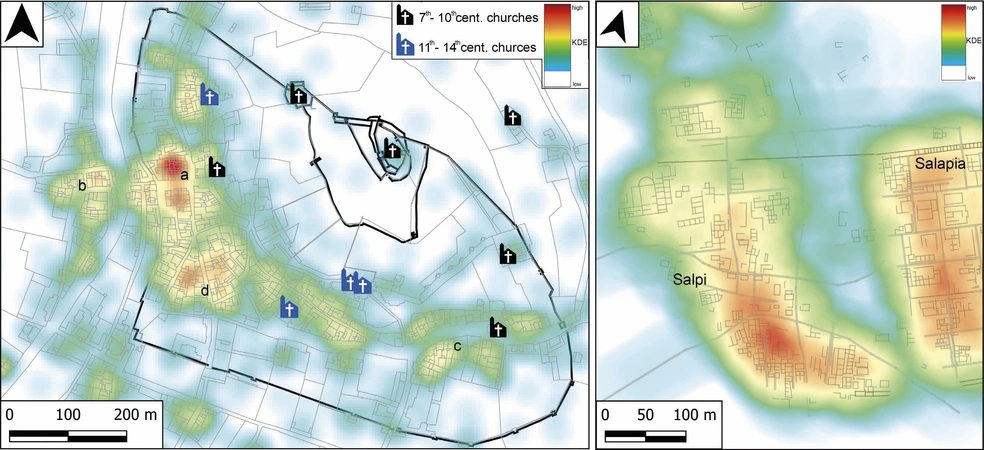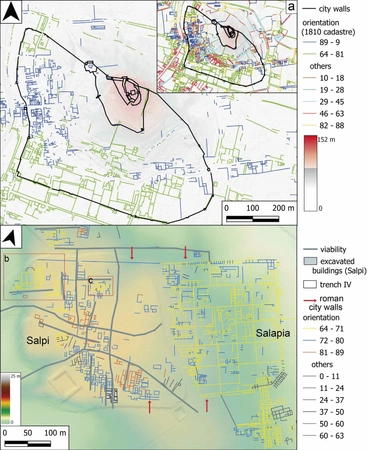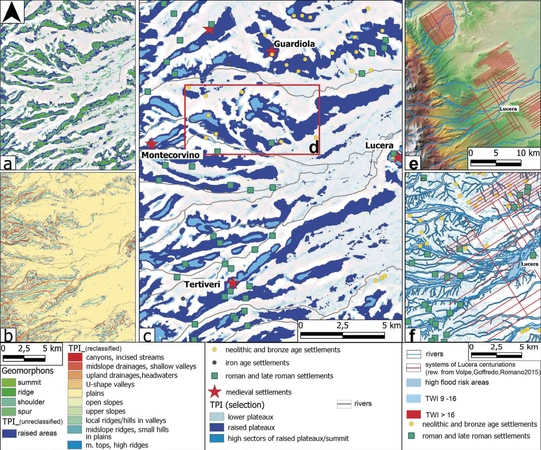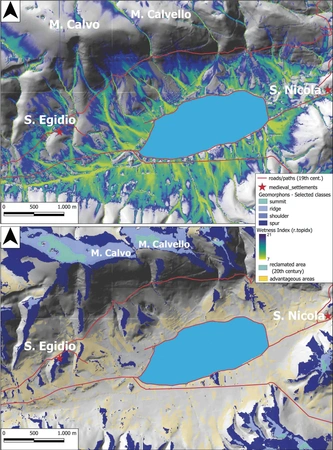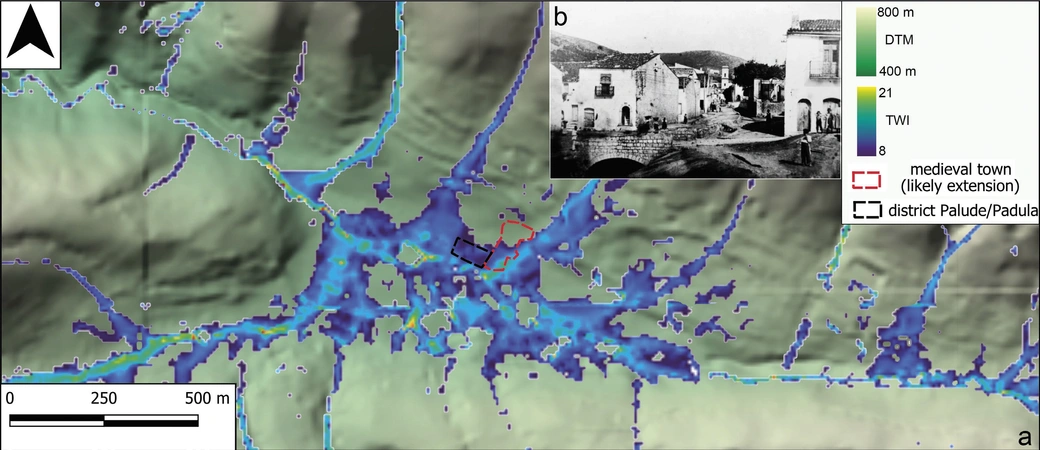Cardone A. 2023, Spatial analysis as a tool for field research. Case-studies in progress for urban and landscape contexts, «Archeologia e Calcolatori», 34.1, 329-340 (https://doi.org/10.19282/ac.34.1.2023.35)
Copy to clipboard Download: BibTeXSpatial analysis as a tool for field research. Case-studies in progress for urban and landscape contexts
«Archeologia e Calcolatori» 2023, 34.1, 329-340; doi: 10.19282/ac.34.1.2023.35
Abstract
This paper concerns spatial analysis applied to urban and landscape scale; main aims are the reconstruction of the evolution in a specific settlement and the detecting of potential location for archaeological sites. Spatial analysis takes advantage of a GIS dataset containing different systems of sources (excavations, historical maps, toponymy, medieval documents, geomorphological data). Case studies at urban scale concern Monselice (Veneto) and Salpi (Northern Apulia). A retrogressive analysis aims to reconstruct the medieval urban fabric starting from the late morphology of these cities, using the modern cadastre or a magnetic survey. The Kernel Density Estimation and the evaluation of parcels orientation have been applied for a comprehension of the urban structure. At territorial scale, case studies regard two sectors of Northern Apulia. First step of these ongoing researches concerns the detection of landform (by TPI-Topographical Index, Geomorphons) and Wetness Index (TWI). This work helps us detect potential areas for settlements which are not preserved (dependencies of the city of Montecorvino and of the monastery of S. Egidio) and validate the outcomes of TWI (S. Marco in Lamis); moreover, it provides new hints about the relationship between settlement pattern, geomorphological elements, territorial/hydrological arrangement related to centuration.
Figures
Preview
Subjects:
GIS and cartography Survey and excavations
Download (PDF)Publishers:
CNR - Istituto di Scienze del Patrimonio Culturale
Edizioni All'Insegna del Giglio
This website uses only technical cookies strictly necessary for its proper functioning. It doesn't perform any profiling and doesn't use third party cookies of any kind.
Read our privacy policy for additional information.
By clicking 'OK' or closing this banner you acknowledge having read this information and accept the website's contents.

